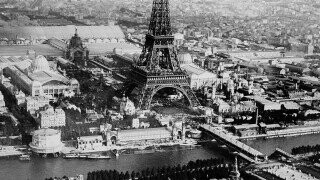France Tried To Make A Fake Paris For World War I

In the later stages of World War I, engineers drew up a bonkers plan to protect the city of Paris from German bombers: They were going to construct a fake Paris next to actual Paris. Attention to detail was key to making this decoy city work. Streets needed to be laid out like Paris. The real city was built on the Seine River, so the decoy city was built on the river as well. They even planned to do things like making windows appear dirty.
Three areas would make up this decoy Paris. The first zone would be made up of train stations, the second would have recognizable landmarks like the Arc de Triomphe, and the third would be an industrial zone. This last zone was not based on any part of Paris in particular, but it would be a particularly appealing target for a German pilot. If they saw a factory from the sky, they would likely waste bombs on it, believing they were taking out part of France’s military machine.

And the key to all of this was light. Behind the city was Fernand Jacopozzi, an engineer known for his impressive lighting displays around Paris. The planned decoy city would use lights to give off the illusion that trains were moving, factories were operating, and life was going on as normal. Ideally, real Paris would be completely blacked out while sham Paris was fully illuminated, drawing attention even further.
Fake Paris was also designed to take advantage of the circumstances that bomber pilots flew in. Earlier in the war, bombers attacked during the day, but the French adapted to the onslaught and developed anti-aircraft technology. Because of this, bombing flights were carried out at night. This limited what pilots could see, and they lacked much of the technology that pilots have today.
Planes didn’t have radar or anything to make sure that they were exactly where they needed to be. Instead, pilots had to trust their instincts and understanding of their surroundings. If they saw what appeared to be a bright city built on the river, then surely that was must be Paris, right?
Whether fake Paris would’ve succeeded will forever be a mystery, but World War II did give plenty of examples of large-scale decoys in action. The British saved about 3,000 people through the use of decoy cities. Plans had been drawn up for the entire project, and some buildings, notably a few “factories,” had been constructed. However, the war ended before fake Paris could be finished.
Though, we're pretty sure that France considered it a better outcome than having to build a second Champs-Élysées.
Top Image: Library Of Congress